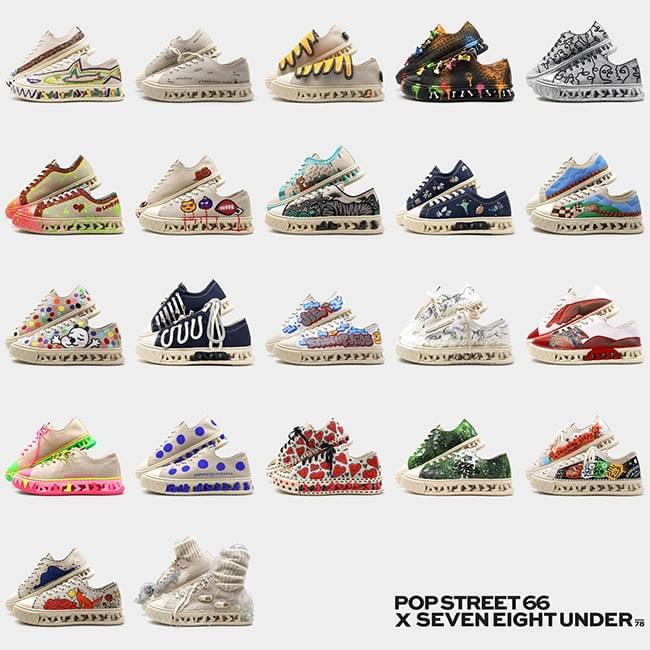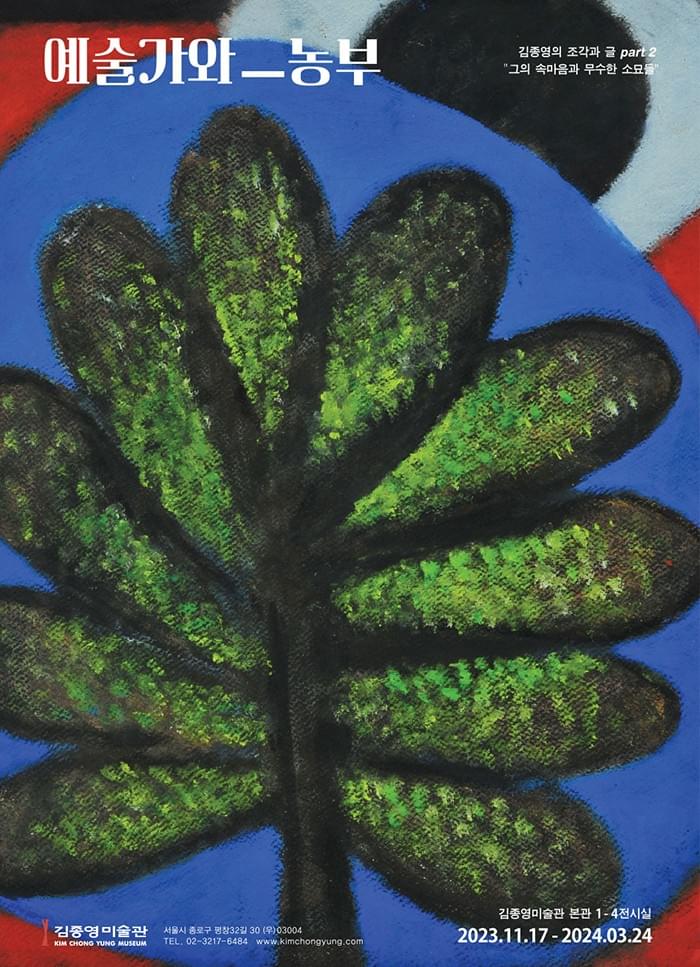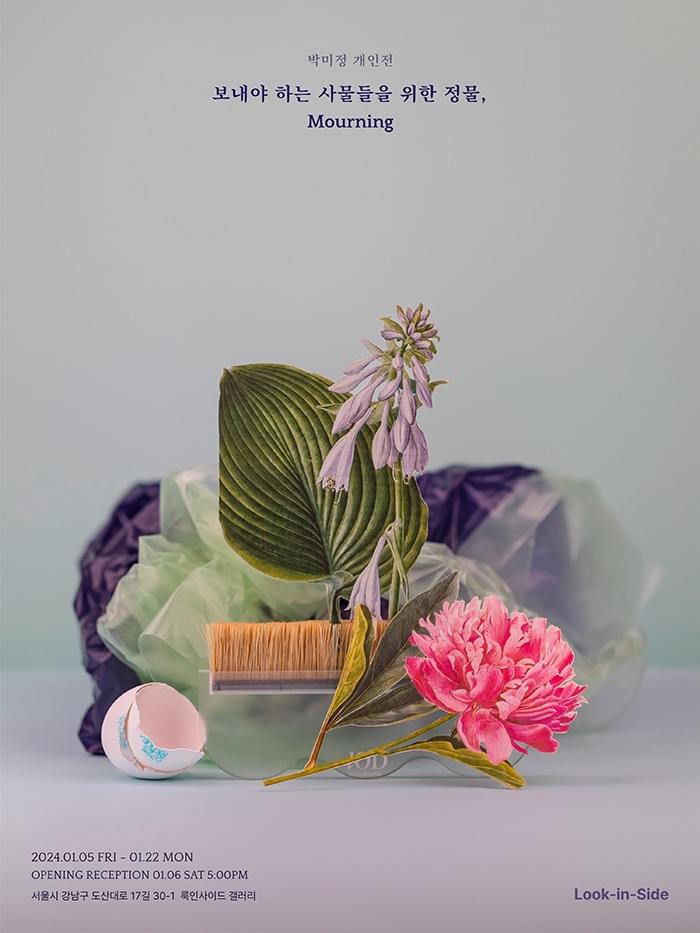
January 2024 Overview

"Pop Street 66" at Museum Wave
Museum Wave hosts a group exhibition featuring over 100 works by 6 pop artists. Despite the predominance of explosive colours, the artists have tried to create a show in which the different palettes and styles do not clash but rather emphasize and harmonize one another. The show also features large-scale graffiti works and a pop-up store where different pop art merchandise can be purchased. Each corner of the museum is intended to be used a photo zone for visitors to enjoy and share online.
Museum Wave is one of the newest exhibition spaces to open doors in Korea. It is supported by Woorinet, a telecommunications company.




"The 4th Wall"
In "The 4th Wall" artists Park Shin-Yang, himself an actor, explores the process of self-disintegration that every actors has to go through on stage. He invites visitors to think about those moments when they themselves have dissolved in another human being before re-configuring themselves back into a new version of their selves.
As actors often have to live behind a mask, Park Shin-Yang explores the space between the mask and the person behind it. The audience buys into the mask but the person wearing it remains unseen, hidden, unknown, yet wanting, needing to be known.
To embody different roles means to divide the self into pieces and make a whole character out of a single piece. This process is what Park find fascinating and likens to the dichotomy between chaos and order. Utlimately, the actor, the real human being behind the mask is a mixture of all carefully crafted pieces.

"The Artist & The Farmer"
Artist Kim Jong-Young explores the crossroad at which many contemporary artists find themselves - to be true to themselves and create the art that resonates with them, or to become producer-manufacturers of art objects that will sell well on the art market. The specific frame of reference he uses is the juxtaposition between artists who paint for history and those who paint for the market. "Diligence" and "honesty" are key words. All artists who have left a mark on the world have painted out of honesty which resonated with their generation.
What is the connection to farmers?
Farmers, being in constant touch with the cycles of Mother Nature, possess a wisdom that is unmatched. A sort of a deeper understanding of the nature of reality that many "modern" people have lost contact with. We are actively encouraged to live without thinking and just follow the crowd and inertia. In such a world, those who look for a deeeper meaning in existence are looked down upon and underappreciated in the same way in which agricultural workers are.

"Hiraeth"
In "Hiraeth" artists Park Su-Jong examines the relationships that people form to places and spaces. How do embed themselves into our hearths and minds and become part of our identity. What are the internal mechanisms through which this process evolves?
According to the artist, attachment stems from psychological response, and in particular from the emotional reaction we have to the experiences that transpired in that space. Yet, in Korea, spaces tend to appear and disappear frequently. Fast development, frequent closure of businesses, renovations of entire neighbourhoods, etc contribute to a sense of places being constantly lost together with the memories within them. How lost do we feel as a result of this? How permeated are our lives by a sense of longing for time and place long gone and lost?

"Mourning"
Artist Park Mi-Jong presents us with unusual "sculptures", the direct result of unusual encounters. The artworks may look like sculptures at first, but upon closer inspection one quickly grasps that they are curious arrangements of objects that do not usually belong together. And here is her question for you - how much of your own life do you see in these strangely stitched-up lumps? What does belonging (together) mean? How do we relate objects to one another and how do we relate ourselves to other people and to our environment? How do we piece together the different elements in our own lives? Is the clash sustainable or the arrangement is indeed only temporary? And in a larger (and Buddhist) sense, isn't all of life, all of existence, just a temporary arrangement?
Many of the objects used for the sculpture-lumps are past their due date, many are old and normally should be thrown away. This is another reference to the transient nature of existence. As time goes by, objects and humans disintegrate, reminding us that all of life is temporary. Yet, by using these "dead" objects for her art, the artists gives them a 2nd life, emphasizing the cyclical nature of existence.

"Brush + Ink: The Practice of Thinking"
"The Practice of Thinking" features works by 10 artists contemplating the challenges of man-nature coexistence. Based on the teachings of Eastern Thought, the show is an attempt at modernising traditional ink and brush painting by placing the tradition within the context of climate change.
Traditionally, ink paintings have been seen as a form of meditation on Nature, as a creation of the Divine and in this sense, protecting the environment is equal to protecting the Divine deisgn. Meditation is the process by which we try to reach higher mental planes at which all of existence is interconnected. It is this Eastern motif of interrelatedness that is re-examined and linked to modern problems like environmental damage.

"I am Still Fitting In"
Jang Se-Il's "I am still fitting in" features sculptures that point to the connection between animals, humans and modernity. Animals in an urban environment - is that all we are? Animals evolve to respond to the changing conditions of their natural habitat. In the same way, humans evolve to match the urban space. Our further evolution takes a direction dictated by our cityscapes. In the first case, the environment is natural, in the 2nd, it is artificial. The artist has chosen the sleek, grey palette to emphasize this artificiality. Are we walking the right path, if we are drifting so far apart from nature? Is this question even relevant considering that survival is adaptation?

"My View, My Story"
"My View, My Story" by artist Kwon Oh-Jun takes a look at the burning question of alienation in our world. How often do we see people living automated lives detached from any sense of joy or purpose? As we work jobs, we don't have passion for, do we become ever so objectified, ever so distant from our unique humanness? How does that impact our relationships with others and with our own selves? Work is meant to be a mean for self-realisation but for many, it has become a mere tool for survival - what are the implications?
While for the most part this state of alienation was invisible, the COVID pandemic brought it to the surface - now it was very obvious that we were all isolated. Has this light-shedding helped us solve the problem, or do we feel ever more helpless?
NEWSLETTER










